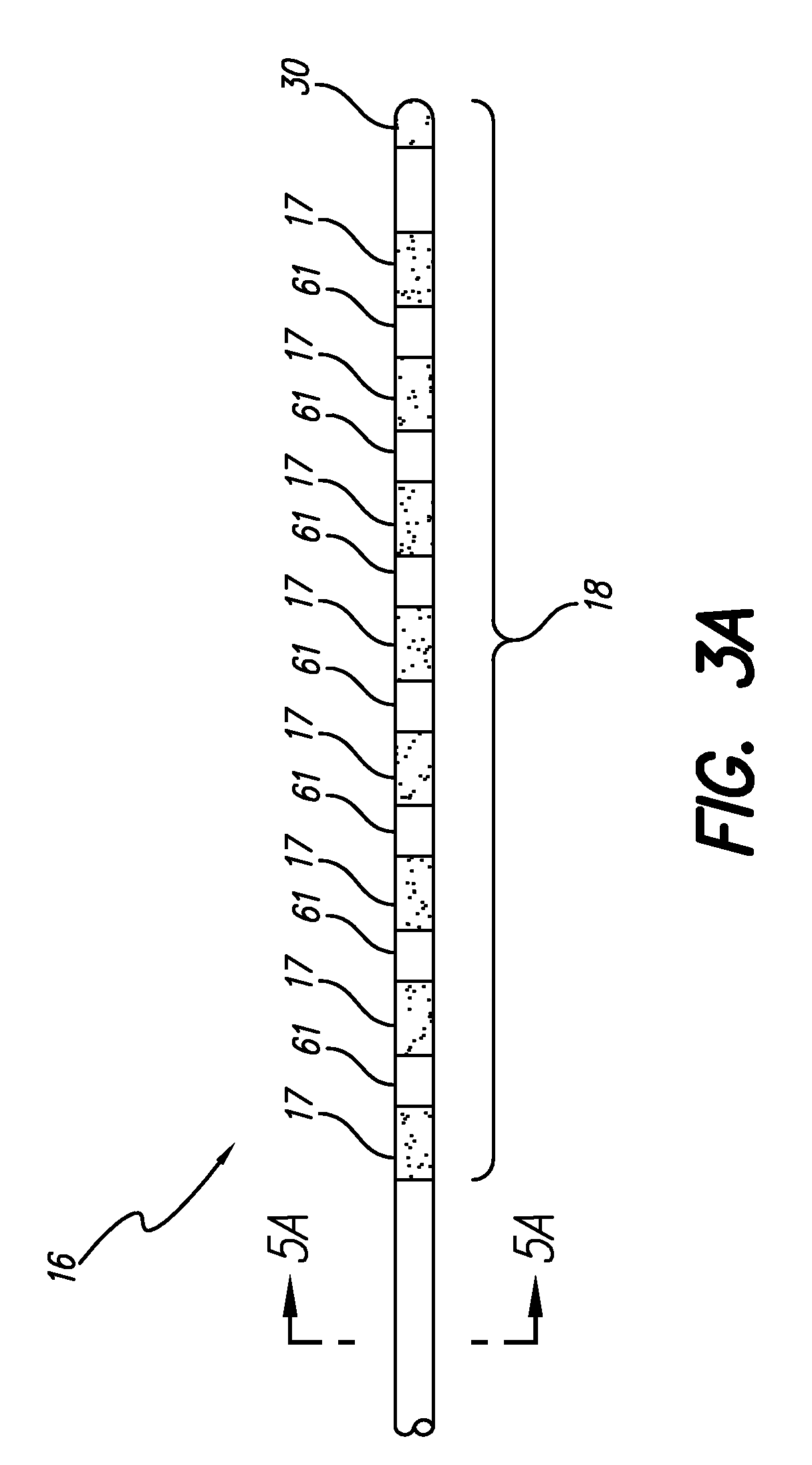Lead assembly and method of making same
a technology of lead and connector block, which is applied in the field of implantable leads, can solve the problems that the medical practitioner can have a difficult time inserting the connector end of the lead into the connector block of the ipg withou
- Summary
- Abstract
- Description
- Claims
- Application Information
AI Technical Summary
Benefits of technology
Problems solved by technology
Method used
Image
Examples
first embodiment
The lead has at least two terminal contacts at the proximal, connector end of the lead. There are two embodiments of materials that can be placed between the terminal contacts: (1) the first embodiment uses terminal spacers, with epoxy or another adhesive-like, electrically insulative material filling the voids or spaces within the terminal spacers and terminal contacts and between a terminal spacer and a terminal contact or (2) epoxy alone filling the separation gap between adjacent terminal contacts.
The distal end of the lead can be any type of electrode configuration that is known. For example, the distal end of the lead may be linear or percutaneous or it may be a paddle shape. The following show in more detail leads having proximal or connector ends as described in (1) and (2) above.
FIG. 3A shows a distal portion of a linear or percutaneous lead 16 that may include embodiments of the proximal lead construction as described above. The stimulating lead 16 is used to stimulate neu...
example 1
Any Lead with a Proximal End Having Terminal Spacers and Epoxy
The lead has a plurality of connector (terminal) contacts, e.g., eight terminal contacts at the proximal end of the lead. Between the terminal contacts are spacers. The terminal contacts are shaped as rings or configured to be ring-like. In particular, the terminal contacts may be cylindrical rings. The terminal spacers are also formed into rings or configured to be ring-like. In particular they may also be cylindrical rings. The terminal spacers may be made from a number of materials. For example, the terminal spacers may be made from polyurethane, e.g., Pellethane™ 55D polyurethane. Other suitable materials include polyetherether ketone or polyarylether ketone (collectively, PEEK), polysulfone, polyester, silicone, and polyethylene. The choice of terminal spacer materials may be determined based on desired stiffness at the proximal end of the lead. For example PEEK and Polysulfone material may be harder than a 55D polyu...
example 2
Linear Lead with Proximal, Terminal Spacers and Epoxy and Linear Distal End
The lead is linear and includes a proximal portion of the lead which is described in Example 1. Thus, the proximal end of the lead has a terminal spacer that is made from the group of materials: PEEK, polysulfone, polyester, silicone, and polyethylene. Epoxy may be applied, e.g., injected, in void spaces within the terminal spacers and terminal contacts and between a terminal spacer and an adjacent terminal contact. The distal end of the lead is linear and includes a plurality of electrode contacts, preferably formed into a ring or ring-like configuration, and more preferably a cylindrical ring. The distal end of the lead can optionally use electrode contact spacers, e.g., of polyurethane.
PUM
 Login to View More
Login to View More Abstract
Description
Claims
Application Information
 Login to View More
Login to View More - R&D
- Intellectual Property
- Life Sciences
- Materials
- Tech Scout
- Unparalleled Data Quality
- Higher Quality Content
- 60% Fewer Hallucinations
Browse by: Latest US Patents, China's latest patents, Technical Efficacy Thesaurus, Application Domain, Technology Topic, Popular Technical Reports.
© 2025 PatSnap. All rights reserved.Legal|Privacy policy|Modern Slavery Act Transparency Statement|Sitemap|About US| Contact US: help@patsnap.com



